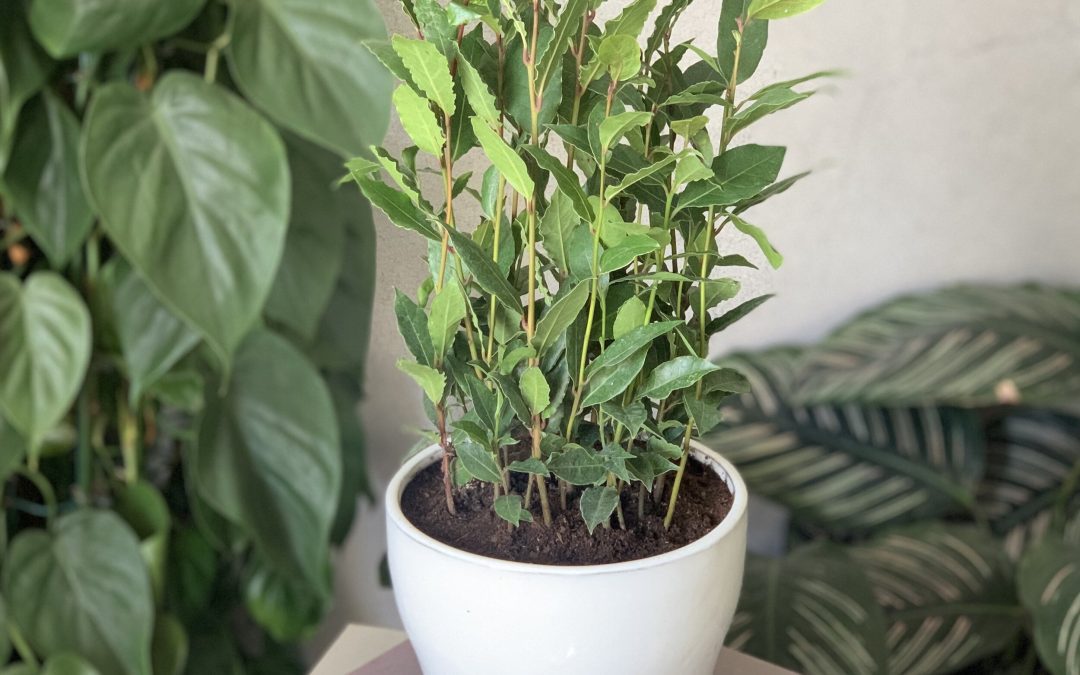Contents
- 1 How to Grow Indoor Bay Laurel: Fresh Bay Leaves All Year
- 1.1 Why Grow Bay Laurel Indoors?
- 1.2 Choosing and Planting Bay Laurel
- 1.3 Indoor Care Tips for Bay Laurel
- 1.4 Harvesting Bay Leaves
- 1.5 Common Problems and Solutions
- 1.6 Creative Ways to Use Fresh Bay Leaves
- 1.7 Styling and Decorating Tips
- 1.8 Frequently Asked Questions
- 1.9 Recommended Products
- 1.10 Outbound Resource
- 1.11 Final Thoughts
How to Grow Indoor Bay Laurel: Fresh Bay Leaves All Year
Bay laurel (Laurus nobilis) is a classic Mediterranean herb beloved by cooks worldwide. Imagine snipping fresh, aromatic bay leaves right from a plant in your kitchen — no more stale, brittle leaves from a jar! Growing indoor bay laurel gives you year-round access to this fragrant herb while adding a touch of elegance to your home.
Why Grow Bay Laurel Indoors?
Flavor boost: Fresh bay leaves have a richer, more complex aroma than dried ones.
Space-saving: Can be pruned and kept compact to fit kitchens, windowsills, or small living areas.
Year-round harvest: Always have fresh leaves on hand for your favorite recipes.
Air-purifying benefits: Like many indoor plants, bay laurel can help improve indoor air quality.
Decorative beauty: Evergreen foliage provides a lush, elegant look indoors.
Choosing and Planting Bay Laurel
Picking the Right Plant
Purchase a healthy young plant from a nursery. Growing bay laurel from seed is slow and often unreliable, so a starter plant is the best choice.
Potting and Soil
Use a sturdy pot with good drainage holes. A clay or ceramic pot helps balance the weight and prevents tipping.
Choose a well-draining potting mix — a mix for citrus or Mediterranean herbs works well.
Consider adding perlite or coarse sand to improve drainage.
Indoor Care Tips for Bay Laurel
Light: Needs at least 6 hours of bright, indirect sunlight daily. A south- or west-facing window is ideal. If light is limited, use a full-spectrum grow light.
Watering: Water when the top 2–3 cm (about an inch) of soil feels dry. Avoid soggy conditions.
Humidity: Average indoor humidity is fine, but occasional misting can help keep foliage healthy.
Fertilizing: Apply a balanced, slow-release fertilizer or a liquid organic fertilizer every 4–6 weeks in spring and summer.
Pruning: Prune regularly to maintain shape and encourage bushier growth. Remove any dead or yellowing leaves promptly.
Repotting: Repot every 2–3 years or when roots become crowded.
Harvesting Bay Leaves
Wait until the plant is well-established before heavy harvesting.
Pick mature, dark green leaves individually as needed.
Fresh leaves can be used right away or air-dried for future use.
Common Problems and Solutions
Yellow leaves: Usually due to overwatering or poor drainage. Check soil moisture and adjust watering habits.
Leaf spots or mildew: Improve air circulation, avoid overhead watering, and prune dense growth.
Pests: Watch for scale insects and spider mites. Wipe leaves regularly and treat infestations with insecticidal soap or neem oil.
Slow growth: Bay laurel is naturally slow-growing. Provide adequate light and patience!
Creative Ways to Use Fresh Bay Leaves
Simmer in soups, stews, and stocks to deepen flavors.
Infuse in sauces and marinades for a subtle, aromatic note.
Use in rice dishes and braises.
Dry and include in herb sachets to repel pantry pests.
Add to homemade potpourri for a natural, fragrant touch.
Styling and Decorating Tips
Shape into a small indoor topiary for a classic Mediterranean look.
Place in a decorative planter on your kitchen counter for easy access while cooking.
Group with other herbs like rosemary and thyme for a lush, edible indoor garden.
Use as a centerpiece on a dining table or windowsill to add greenery and elegance.
Frequently Asked Questions
Can I grow bay laurel indoors all year? Yes! With the right light and care, bay laurel can thrive indoors year-round.
Will it produce berries or flowers indoors? Bay laurel can produce small yellow flowers and black berries, but this is rare indoors.
How large will it get indoors? With pruning, you can keep it around 60-90 cm (2-3 feet) tall and manageable.
Are fresh bay leaves stronger than dried? Yes, fresh bay leaves have a more potent aroma and should be used in smaller quantities.
Recommended Products
Outbound Resource
Learn more in this Wikipedia article on bay laurel.
Final Thoughts
Growing indoor bay laurel is a rewarding way to bring fresh flavor and classic beauty into your home. Whether you’re a culinary enthusiast or just love having lush, evergreen plants, this herb is an excellent addition to your indoor garden.
Start your bay laurel adventure today and elevate your dishes with the rich, aromatic taste of homegrown bay leaves!

